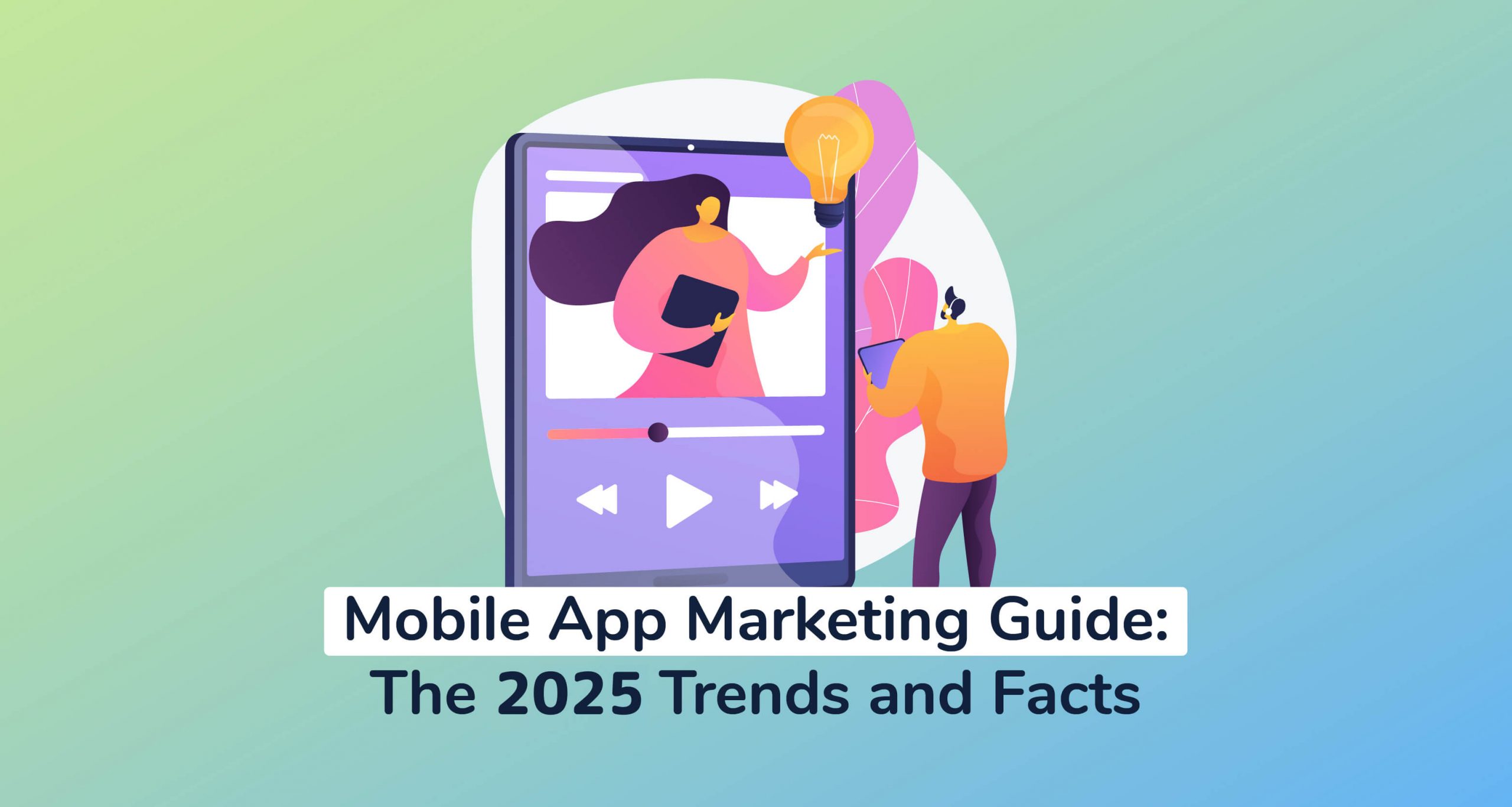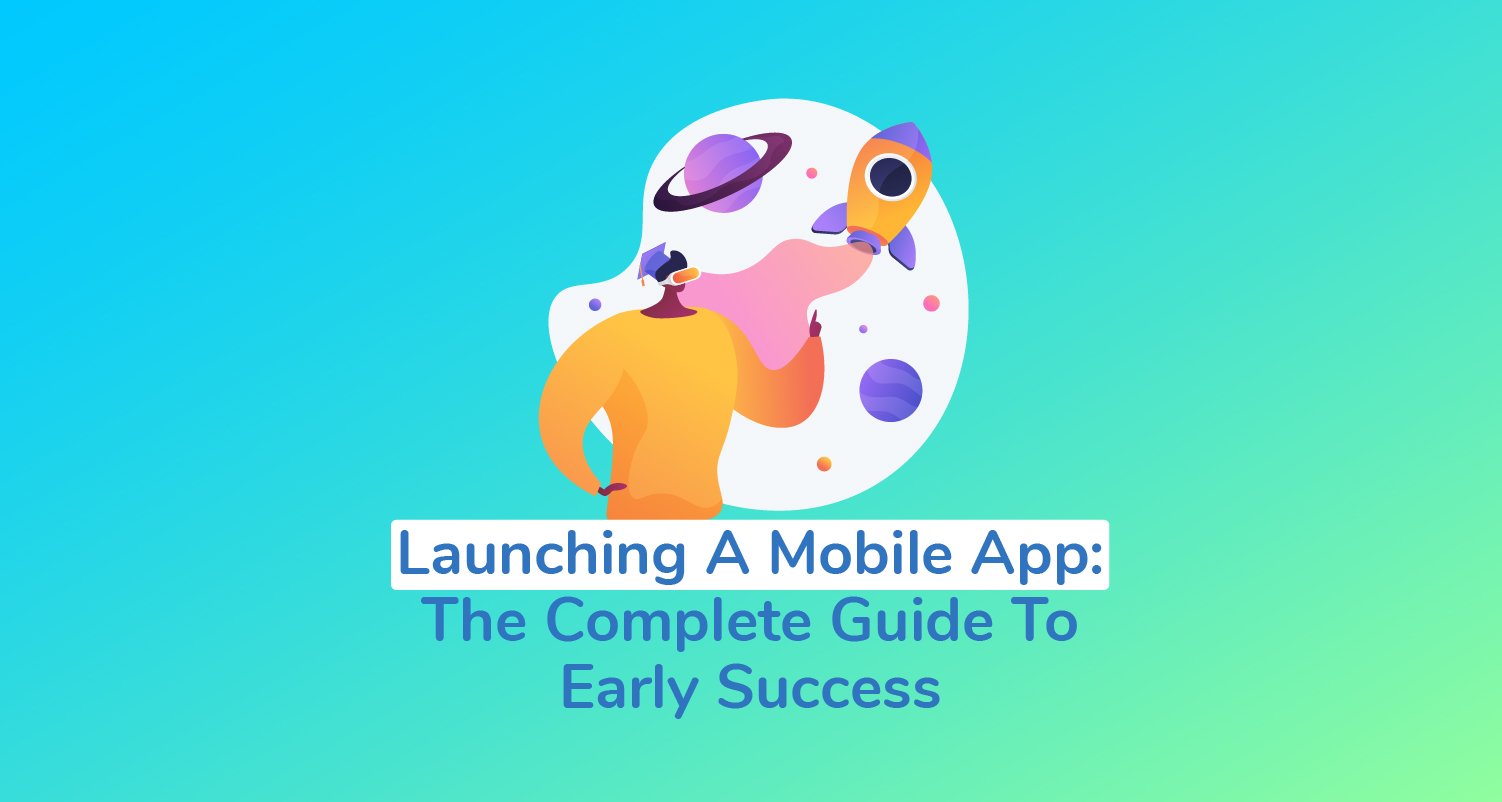
How To Use Data To Increase App User Acquisition
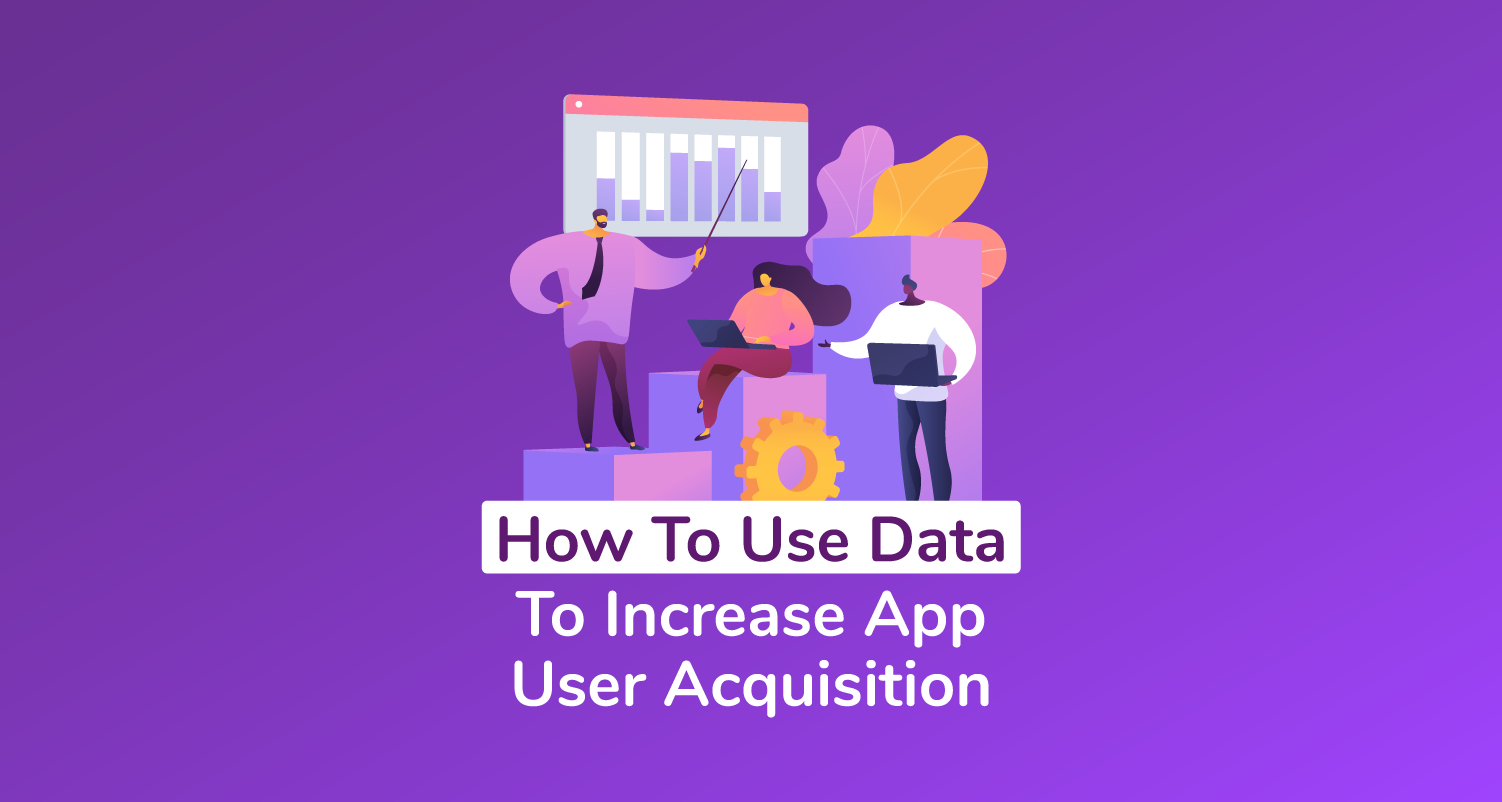
Sorry to say but, if you think that app development is the costliest stage in the mobile app life cycle, you’ll be in for a rude awakening when you proceed to app user acquisition.
Ask any seasoned mobile app developer or marketer, and they’ll confirm it for you. That app development isn’t even half as challenging and costly as mobile user acquisition.
And no – we’re not talking about small-scale mobile apps alone. As it turns out, the trend is also consistent with the heavily funded applications that splash millions of dollars on development.
Table of Contents
- Mobile App User Acquisition Trends
- What Is Data-Driven App User Acquisition?
- Data-Driven App User Acquisition vs. Traditional Mobile User Acquisition Tactics
- Benefits Of Leveraging Data In Your App User Acquisition Campaigns
- #1. Target Audience Clarity
- #2. Personalization
- #3. Spend Optimization
- How To Use Data To Boost App Installs – 5 Proven Tactics
- #1. Track The Right App User Events
- #2. Develop Target User Profiles From Predictive Analytics
- #3. Optimize Multiple Channels
- #4. Automate Personalized Engagements
- #5. Test Your App Marketing Campaigns
- Key Takeaways
Mobile App User Acquisition Trends
You see, in 2020 alone, mobile app marketers across the globe spent more than $74.6 billion on mobile app install campaigns. That was about 30% more than they had forked out in 2019, and the growth has never slowed down since.
So precipitous is the rate, in fact, that by the end of 2021, they’ll have spent at least that $96.5 billion on app user acquisition– followed by $118.4 billion in 2025.
Now, let’s put it all into perspective. If you break it down further and compare the numbers across the mobile apps that ran the campaigns, you’ll be shocked to discover that every single app installs instance is worth a couple of dollars.
iOS apps in the Apple App Store, for instance, have an average global CPI (Cost Per Install) of $3.60, while Android apps in the Google Play Store come in at a distant second with $1.22 per app install.
Even the US market hasn’t been spared – as its average CPI for Android apps stretches to $1.72, while an iOS app installation costs $2.07.
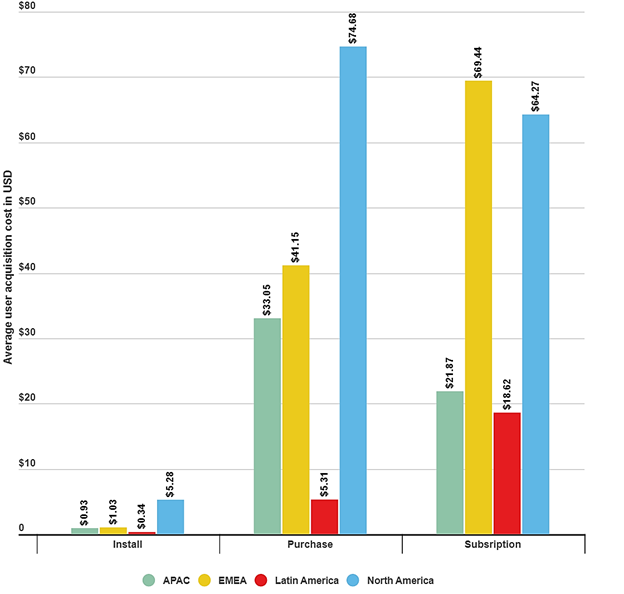
So, let’s face it. While developing a typical mobile app might cost you between $40,000 and $120,000, the subsequent user acquisition campaigns tend to gobble up a lot more cash by the time they get to say, just half a million app installs.
And make no mistake about it. Although user acquisition campaigns are growing exceedingly costlier by the day, they don’t come with any sort of guarantee. It’s possible to use up your entire marketing budget but then end up with barely any app installs to show for it.
Well, it’s because of these high stakes that we finally had to come up with a fool-proof system for minimizing the risks and losses. Instead of cutting the mobile app marketing budgets, we found ways to increase the ROI of the user acquisition campaigns through data-driven optimizations.
I’ve actually been at it for over a decade now, during which I’ve had the chance to leverage big data across a wide range of app install campaigns and usage levels.
As such, here’s an in-depth guide that gets you started on the data-driven mobile user acquisition strategy that has, so far, helped PreApps achieve over half a billion app downloads across more than 3,300 marketing projects.
The article explains what data-driven app install campaigns are all about, how they differ from traditional approaches, plus the benefits they offer. Most importantly, though, you get the basic tips on how you can capitalize on data for increased mobile app user acquisition.
What Is Data-Driven App User Acquisition?
The whole concept of data-driven app user acquisition is just as simple as it sounds. This is where mobile app marketers and PR teams leverage big data in building, launching, running, tracking, and managing both organic and paid user acquisition strategies.
The data itself is generated from a wide range of digital sources.
You’ll notice, for instance, that app marketers tend to set up analytics tools across multiple user engagement channels – which then proceed to track their audience’s activities and behaviors in real-time. It’s from these data reports that they ultimately get to learn more about their target users’ preferences and the general market trends.
Now, in case you’re wondering, the answer is no – you don’t need specialized tech skills and deep pockets to use such a system. What’s more, it’s not exclusive to large businesses and enterprises. Even small-time app developers can launch successful data-driven app user acquisition campaigns on a limited budget.
You could, for example, pull market information from any of the default social media reporting tools – I’m talking about Facebook Analytics, Twitter Analytics, and the likes.
Then for actionable insights on how to improve your App Store ranking, you might want to check out free App Store Optimization tools such as PreApps App Report. It’ll help you keep track of all the important ASO metrics across both the iOS App Store and Google Play Store.
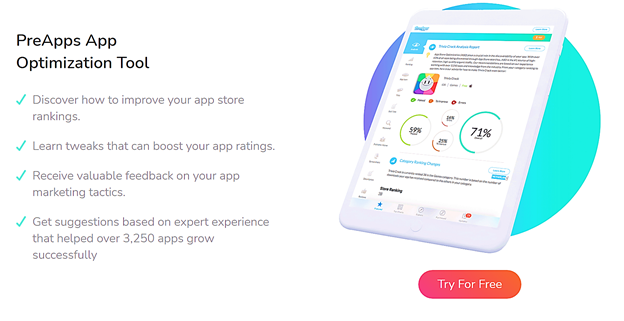
Overall, the principal objective of these data-driven tactics is to help mobile app marketers make informed decisions on their mobile app install campaigns. Data analytics grants them valuable insights, which then facilitate high-level audience engagement for the sake of boosting mobile app downloads.
And so, you could say that in the end, mobile app marketing teams use data to improve their app their campaign efficacy, as well as ROI. That’s why, in fact, marketing analytics happens to be the biggest investment for marketers today – taking up about 16% of their total annual budgets.
As an app developer, you can learn from this trend and create your own cost-effective strategy for app user acquisition.
Data-Driven App User Acquisition vs. Traditional Mobile User Acquisition Tactics
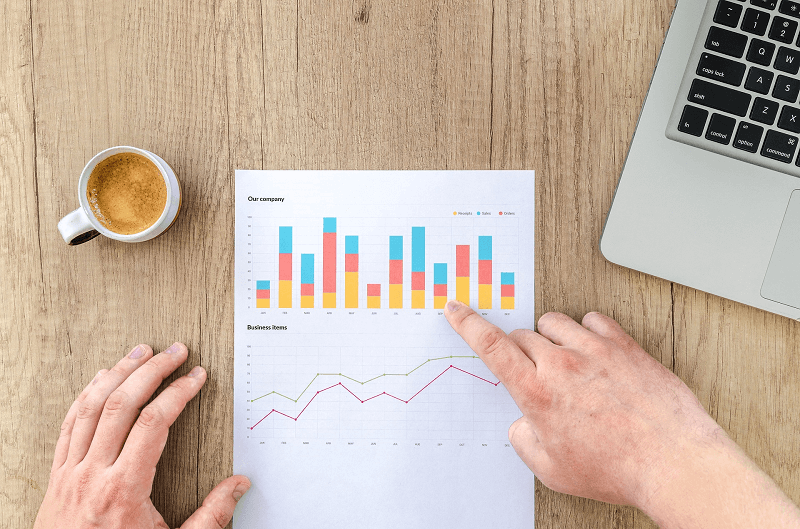
To properly understand the real impact and value of data on mobile user acquisition, let’s compare and contrast it with traditional marketing strategies.
Now, for starters, we can agree that marketing is fundamentally centered around two objectives. Regardless of whether you’re using data or traditional approaches, you’ll first try to find out your target consumers’ needs and desires. These are the insights that you ultimately use to develop the appropriate campaign messages.
In practical terms, therefore, the procedure that you ought to follow as you create and implement your app user acquisition strategy is as follows:
- Find ways to deeply comprehend your target audience.
- Establish the needs, preferences, and desires of your target app users.
- Come up with engaging marketing messages that demonstrate how the app will cater to your target audience’s needs.
Now, the thing about the traditional approaches is, they predominantly build their target audience profiles based on assumptions. As such, marketers are often forced to blindly experiment with different tactics, hoping to find one that’s capable of rallying mobile app installs.
So, while this traditional app user acquisition would save you the cost and trouble of setting up data analytics, you’d still end up wasting a lot of time and resources on trial and error.
In contrast, data-driven app user acquisition would initially require a substantial investment in intelligence tools – but then you’d subsequently have an easy time recovering the costs through well-targeted campaigns.
The data essentially provides full visibility into what the target audience is most interested in, what they respond positively to, the platforms they use, etc. With such valuable insights, you should be able to accurately optimize both organic and paid user acquisition campaigns across different platforms.
You could, for instance, choose to prioritize the engagement channels that have proven to convert the best – email, Facebook, Twitter, push notifications, you name it. You also get to identify App Store Optimization opportunities, as well as determine the appropriate keywords to include in your Apple Search ads.
Then since data collection and analytics is a continuous process, you get to keep tabs on the developments, and subsequently, improve the campaigns in real-time.
As such, it’s understandable why 76% of marketing leaders base their campaign decisions on data analytics. And if you asked digital marketers, at least two-thirds of them would confirm that data-based decisions are indeed more effective than assumption-based resolutions.
Benefits of Leveraging Data In Your App User Acquisition Campaigns
#1. Target Audience Clarity
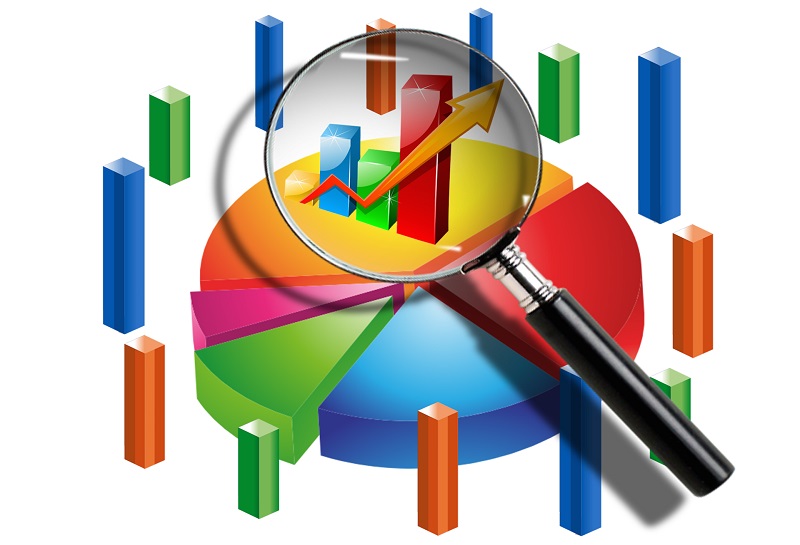
One thing we can all agree about data is, it gives you a deep understanding of your target audience. Mobile app marketers continue to use different forms of data analytics to not only identify their ideal target audiences, but also gain better clarity about their behaviors, needs, devices, contact channels, etc.
You can, for instance, use insights generated from a CRM system’s AI to predict your chances of driving app downloads from selected unique users. Social media analytics, on the other hand, would dig through the likes of Facebook and Twitter to reveal your prospects’ engagement patterns, interests, social networks, etc.
As a result, you should be able to establish the best audiences for your app install campaigns, plus the specific optimization parameters that you ought to prioritize.
Otherwise, marketers also use the information to separate the high-value prospects from average users. The former tend to produce better ROI as they typically engage four times more than the latter, which ultimately sees their account for up to 85% of the total mobile app revenue.
#2. Personalization
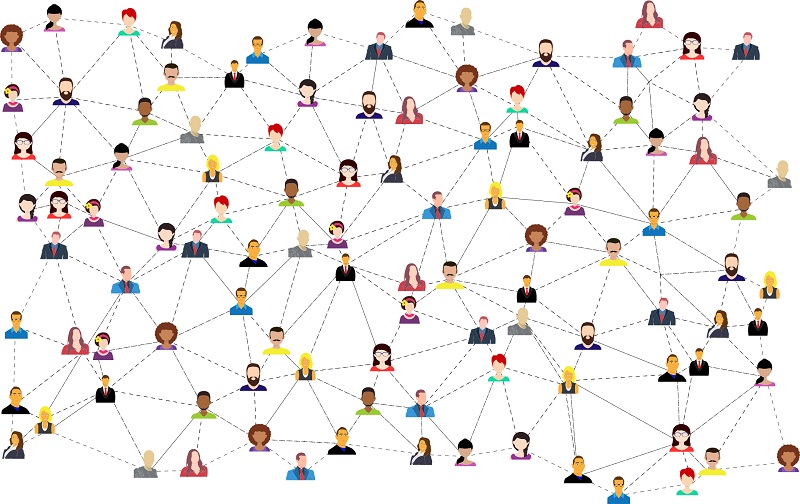
Speaking of audience insights, another thing you’ll appreciate about data-driven mobile user acquisition is the level of personalization it delivers.
And why is that important?
Well, if you haven’t noticed already, today’s caliber of consumers – including smartphone users – don’t respond particularly well to generic marketing messages. They’re tired of seeing the same old stuff from promoters and marketers.
So widespread is the sentiment, in fact, that 74% of the customers sampled in a recent survey complained of getting frustrated by brands that continue to bombard them with irrelevant content. Consequently, it’s no surprise that a whopping 79% of them are quick to dismiss offers that aren’t personalized based on their interactions with the brands.
If you intend to drive mobile app downloads, therefore, you have no choice but to personalize your app user acquisition campaigns across all the relevant engagement channels.
Now, that’s precisely where target audience data comes in handy. While there’s an infinite number of automation rules you could possibly implement across multiple channels, it’s the underlying audience data that eventually determines the personalization criteria and triggers for every target prospect.
What this means is, the data that you collect about your target audiences ultimately defines how, where, and when you engage each individual.
You could, for instance, set up your paid user acquisitions campaigns to reach out to target individuals based on the interests sampled across social media platforms.
In particular, you’ll notice that Google’s Universal App Campaigns, along with Facebook’s and Twitter’s App Install Ads allow you to build quite a dynamic targeting system – with various personalization rules based on the recipient’s parameters.
Such well-personalized marketing campaigns have, over the years, helped businesses register five to eight times higher ROI than with generic messages.
#3. Spend Optimization

As it turns out, even seasoned mobile app marketers commonly find it difficult to point out wasted spending from their ad budgets. Although digital ad platforms typically provide billing statements, collating and comparing the figures across different sites can be a challenge.
With versatile cost tracking tools, though, you’ll be able to appraise your spending in real-time. The reports usually review each campaign according to the funds spent plus the corresponding performance levels.
Others have been built to analyze customer journeys via different attribution models – like Unified Marketing Measurement (UMM). Such UMM data offers a 360-degree view of the purchase or app install paths through media mix modeling and multi-touch attribution.
That means you get to identify the ads with the highest ROI based on conversions, as well as any user acquisition strategy that has been disproportionately eating into your ad budget.
In the end, therefore, you can proceed to optimize your spending by allocating more funds to the high conversion options, while freezing the low ROI allocations.
How To Use Data To Boost App Installs – 5 Proven Tactics
Here are the five proven tricks to increasing app user acquisition using data:
#1. Track The Right App User Events
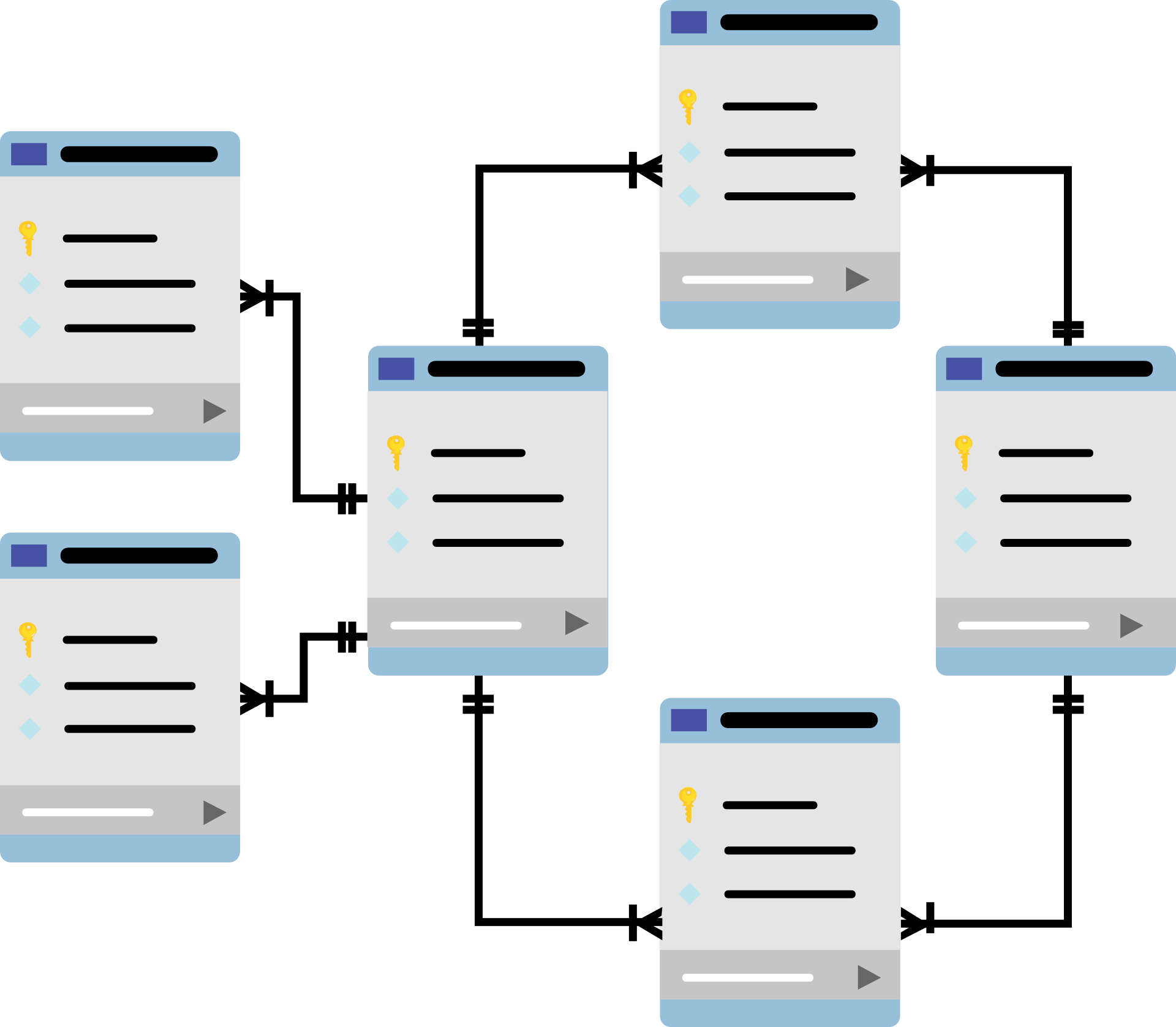
When the market starts warming up to your mobile app and it manages to win over a couple of users, you might want to set up an in-app measurement system for generating data analytics on your app users’ behaviors, usage trends, and overall engagement.
By tracking all these parameters, you’ll gain granular insights into not only your app users’ activities, but also their corresponding needs and lifetime value, plus the effectiveness of your marketing campaigns.
You should, in particular, set your in-app measurement tools to prioritize the following user actions. These are the few events from which you can generate valuable information to empower your user acquisition campaigns:
- Engagement Events: Engagement events refer to the general app usage actions. By tracking these over the long haul, you get to understand the specific features that you should highlight in your marketing messages to arouse interest among the target audiences.
- Validation Events: Validation events are the user actions that help you recognize users based on their device. The identification process itself is anonymized, and it reveals the specific device on which the actions occur. This then allows you to build a systematic profile of each individual’s behavior based on the activities linked to their respective devices. So, in the long run, such validation events help you define the types of personas you could target in your mobile user acquisition campaigns.
- Intent Events: Intent events are the actions that show the user is just about to commit themselves to a purchase. You can think of them as the in-app pre-conversion indicators, from which you can generate information on your app users’ interests, purchase patterns, and value. All these parameters are helpful when you need to determine the appropriate conversion journeys to tie your app install campaigns around.
- Conversion Events: Conversion events occur when app users proceed to make purchases through the app. They help you develop a richer user profile that reflects the conversion parameters – such as price, interests, customer journey, lifetime value, etc.
#2. Develop Target User Profiles From Predictive Analytics
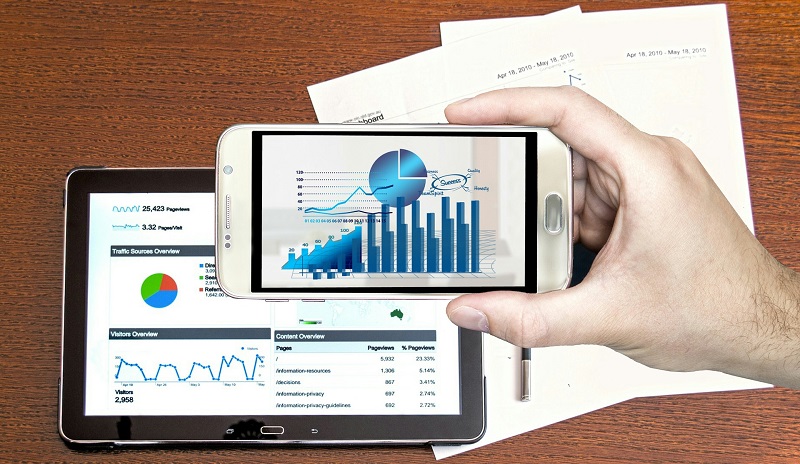
Target user profiles aren’t entirely built from in-app analytics. By the time you get to that level, you should have long learned how to develop an ideal user profile based on predictive analytics.
A word of caution, though. We’re not talking about making blind assumptions. Rather, predictive analytics are somewhat accurate indicators that are generated from AI-based tracking and reporting solutions.
You just need to integrate a highly intelligent machine learning engine with your digital ecosystem, and it’ll proceed to keep tabs on your audience’s activities.
A good example is a data-driven CRM solution that embeds on your site plus engagement channels and then pulls intel from your campaign traffic.
By tracking the activities of such leads, the AI-based tools establish user behaviors and patterns, which are then transformed into intelligence depicting the conversion potential of each prospect.
That means you could use the resultant predictive analytics to set the highly promising prospects apart from the low-quality ones with slim conversion potential.
Overall, these variables will help you determine who to prioritize in your campaigns for quick and cost-effective conversions. That’s one way to progressively minimize your app user acquisition CPI.
#3. Optimize Multiple Channels
In some of our past articles, you might have seen the featured comparative data charts that show the leading app discovery methods.
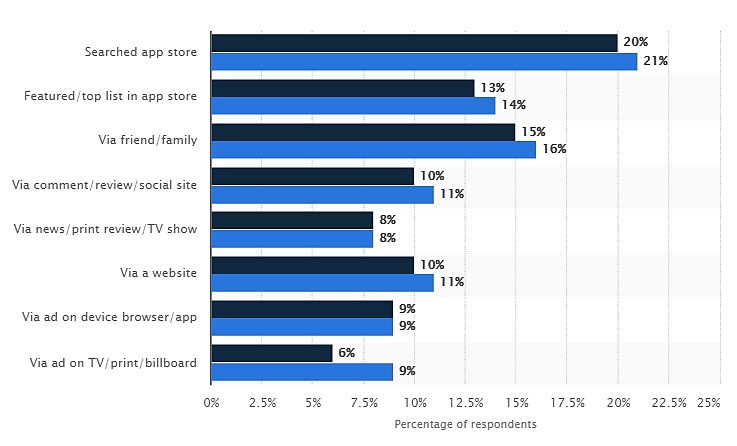
Now, in case you haven’t noticed, this whole bar arrangement can be a bit misleading. While they typically illustrate the channels as independent entities with App Store search the top, things happen to operate a bit differently in the real world.
You see, mobile app discovery channels don’t run independently. Rather, app user conversion journeys have grown increasingly complex over the past few years – to the point of merging multiple channels to form a holistic web of devices and touchpoints.
App installation journeys are now omnichannel experiences, which take users through various engagement channels by the time they get to proceed with the app downloads.
You could, for instance, start off your journey on a social media site like Facebook or Twitter, then later proceed to the app’s website, before ultimately running an App Store search to download the app.
With that in mind, you cannot afford to limit your app user acquisition campaign to just one or two digital channels. Similarly, avoid setting up a disintegrated framework of various engagement channels.
Today’s dynamic mobile app user requires an omnichannel journey, with multiple engagement channels linking to form a continuous experience. The funnel itself should integrate multiple data sources to facilitate the smooth flow of information as prospects, leads, and customers sail through various touchpoints.
In simple terms, therefore, you should find ways to automate the flow of data and analytics from one platform to another, while maintaining a 360-degree view of all the relevant parameters.
#4. Automate Personalized Engagements

Now that consumers are exceedingly yearning for personalized experiences, app user acquisition campaigns should always be tweaked to target the right audiences with the right message at the right time.
The trick here is to set a machine learning engine to track your audiences, analyze their behaviors, and then provide insights into their interests, needs, demographics, conversion value, availability, and contact channels, among other relevant parameters.
It doesn’t end there, though. Machine learning should work hand in hand with Artificial Intelligence to automate the subsequent mobile app marketing operations.
As the system administrator, you just need to define the automation triggers, create personalized messages for each target segment across multiple omnichannel touchpoints, and then leave the system to engage the leads on your behalf.
Such a system can be further supplemented with an automated support system built on chatbots. And while you’re at it, ensure the chatbots are well-integrated into not only your digital ecosystem but also external sources of customer data – in order to deliver adequately personalized experiences.
#5. Test Your App Marketing Campaigns
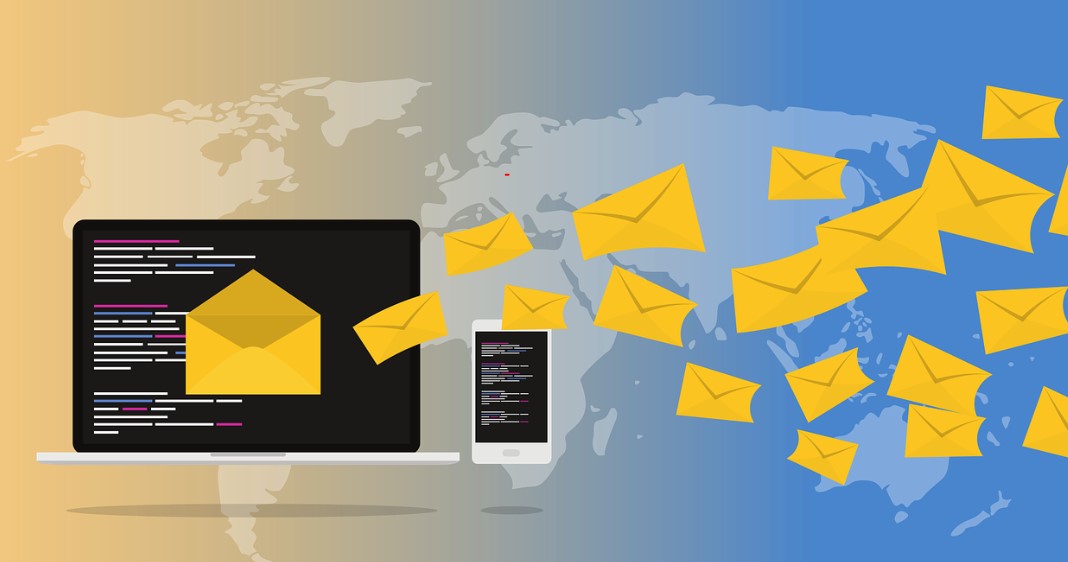
Sure, machine learning and AI can substantially reduce your workload by automating some of the repetitive tasks. But, as you enjoy the perks, avoid relying entirely on them when it comes to subjective campaign variables. You should, instead, find ways to enrich their insights with data from relevant practical trials.
Consider, for example, conducting A/B tests on some of the user acquisition strategy parameters. You just need to come with multiple variations of your campaign messages or paid user acquisition ads and then deploy them concurrently to compare their performance capabilities.
While it’s often ignored by marketers, A/B testing is one of the most reliable ways of gauging the market to establish the best practices. Data generated from the tests address any uncertainties that you might have regarding subjective variables on your mobile app acquisition campaigns.
Key Takeaways
In a nutshell, you should keep in mind that:
- In 2020 alone, mobile app marketers across the globe spent more than $74.6 billion on mobile app install campaigns – which translated to a 30% growth from 2019.
- By the end of 2021, marketers will have spent at least that $96.5 billion on app user acquisition – followed by $118.4 billion in 2025.
- iOS apps in the Apple App Store have an average global CPI (Cost Per Install) of $3.60, while Android apps in the Google Play Store come in at a distant second with $1.22 per app install.
- While developing a typical mobile app might cost you between $40,000 and $120,000, the subsequent user acquisition campaigns tend to gobble up a lot more cash by the time they get to say, just half a million app installs.
- Data-driven app user acquisition is all about mobile app marketers and PR teams leveraging big data in building, launching, running, tracking, and managing both organic and paid user acquisition strategies.
- PreApps App Report will help you keep track of all the important ASO metrics across both the iOS App Store and Google Play Store.
- Overall, the principal objective of these data-driven tactics is to help mobile app marketers make informed decisions on their mobile app install campaigns. Data analytics grants them valuable insights, which then facilitate high-level audience engagement for the sake of boosting mobile app downloads.
- Marketing analytics happens to be the biggest investment for marketers today – taking up about 16% of their total annual budgets.
- Traditional marketing approaches predominantly build their target audience profiles based on assumptions.
- 76% of marketing leaders base their campaign decisions on data analytics.
- At least two-thirds of marketers confirm that data-based decisions are indeed more effective than assumption-based resolutions.
- Mobile app marketers continue to use different forms of data analytics to not only identify their ideal target audiences, but also gain better clarity about their behaviors, needs, devices, contact channels, etc.
- 74% of the customers complain of getting frustrated by brands that continue to bombard them with irrelevant content.
- A whopping 79% of customers are quick to dismiss offers that aren’t personalized based on their interactions with the brands.
- Well-personalized marketing campaigns have, over the years, helped businesses register five to eight times higher ROI than with generic messages.
- Versatile cost tracking tools appraise your spending in real-time. The reports usually review each campaign according to the funds spent plus the corresponding performance levels.
- The app user events from which you can generate valuable information to empower your user acquisition campaigns include; Engagement Events, Validation Events, Intent Events, Conversion Events.
- Predictive analytics are somewhat accurate indicators that are generated from AI-based tracking and reporting solutions.
- By tracking the activities of such leads, the AI-based tools establish user behaviors and patterns, which are then transformed into intelligence depicting the conversion potential of each prospect.
- App user conversion journeys have grown increasingly complex over the past few years – to the point of merging multiple channels to form a holistic web of devices and touchpoints.
- Now that consumers are exceedingly yearning for personalized experiences, app user acquisition campaigns should always be tweaked to target the right audiences with the right message at the right time.
- App installation journeys are now omnichannel experiences, which take users through various engagement channels by the time they get to proceed with the app downloads.
- As the system administrator, you just need to define the automation triggers, create personalized messages for each target segment across multiple omnichannel touchpoints, and then leave the system to engage the leads on your behalf.
- While it’s often ignored by marketers, A/B testing is one of the most reliable ways of gauging the market to establish the best practices.
Conclusion
All in all, we can now conclude that the primary role of data is to offer better insights into all the relevant customer and market parameters – upon which app developers and marketers can proceed to build well-personalized mobile user acquisition campaigns.
This whole thing is, in fact, a continuous process that keeps running from the moment you launch the app, through all the progressive mobile app growth phases. Just remember to periodically refine the data framework while you’re at it, as a means of responding to all the changing user, campaign, and market parameters.
For the best possible outcome, however, you might want to leave the nitty-gritty to the experts. PreApps, in particular, possesses just the right balance of advanced data tools, app marketing tactics, and professional competence to exceed your mobile app growth plans.
So, go ahead and get in touch with us today, and we’ll soon have your mobile app adding a couple of millions to our portfolio of more than half a billion app downloads.
Newsletter
Don’t miss a thing! Sign up to receive daily news
Subscribe Newsletter




